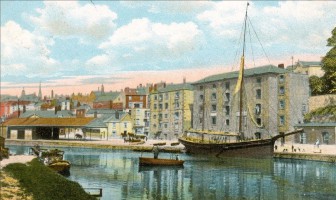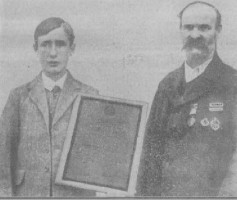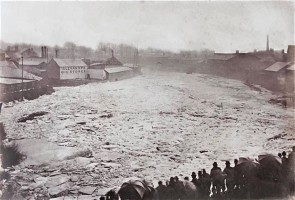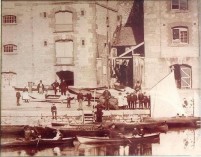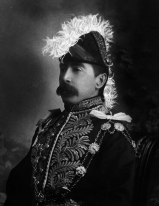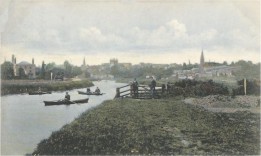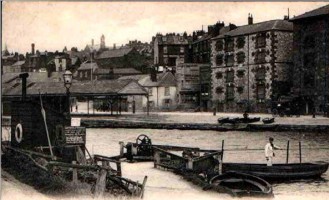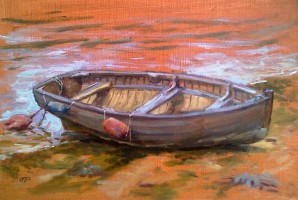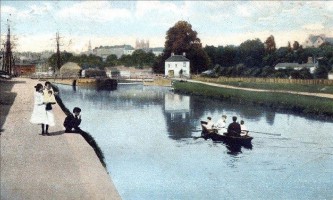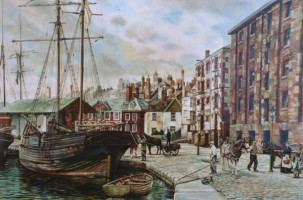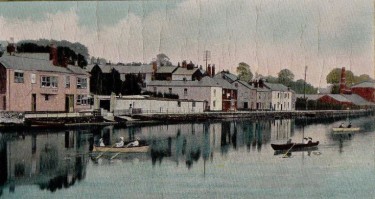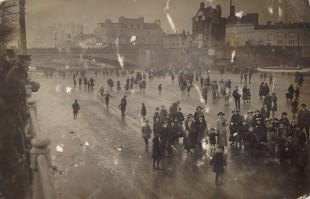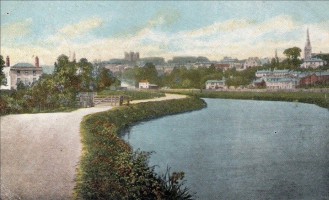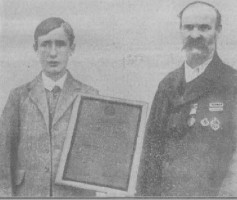
THOMAS GREGORY
The Lifesaver of Exeter
by Michael Parrott
(Chairman: Friends of Higher Cemetery)
©Michael Parrott
(Due to the lockdown caused by the coronavirus epidemic, Michael was unable to give us this talk. However, he most kindly supplied us with the script which is printed below)
THE QUAY
In the first half of the 19th century, trade arriving in Exeter via the quay, continued to grow. The city’s authorities spent more than £100,000 in extending the canal and building a canal basin to allow the turning of large boats.
The roadway was widened and the council acquired the right to bore into the rock beneath Colleton Crescent. This was transformed into cellars over the years. Two new five-storey warehouses were constructed on the quay in 1834-5 and commodities being unloaded on the busy quayside included corn, Swedish timber and coal from northern England.
Although the quay was thriving, however, for the majority of residents in the vicinity life was tough and people were poor, except for the aristocracy who lived in Colleton Crescent overlooking the quay.
In 1844 the railway arrived at Exeter, and the quay began to lose a lot of trade to ‘God’s Wonderful Railway’. The loss of revenue led to a slow deterioration in the use of the canal and the quay. In the 18th century Exeter had been the 6th largest city in England, by 1860 it had fallen to 60th.
However, heavy industry expanded at Haven Banks, and two new gas holders were built in the 1870s. From St Thomas to the quay there was an unpleasant smell, especially from the gas works, and an increase in pollution. In the 1870s it was said that the stench, especially if the wind was blowing in the wrong direction, was dreadful. The smell was described as being similar to rotten eggs, and families became ill.
Residents of Colleton Crescent complained that the value of their properties had reduced as a result of the smell and pollution, and that their view, especially after the installation of the gas holders, had been severely reduced. Another fear of those residents living in the vicinity of the quay was the increasing quantity of petroleum and benzolin being stored under Colleton Crescent.
In this environment lived Thomas Robert Gregory (known as Tom), the son of George Gregory (a plasterer and general dealer) and his wife Annie Coombes. Born in 1872 at 13 Holloway Street, he and his family moved to Quay Lane during the 1870s.
Tom had nine younger siblings (three sisters and six brothers), of whom seven survived childhood.
In 1876 their father, George, established the firm ‘Messrs Gregory’, wood and coal dealers based at 22 Quay Lane next door to Tom’s Uncle, Samuel Gregory, who lived at number 21.
THE BIG FREEZE
In January 1881, at the age of 9, Tom would have witnessed a great snowstorm with twelve inches falling on the city. The River Exe was frozen solid with the ice being at least five inches thick. There were huge fears that when the snow and ice thawed there would be huge flooding, the hope was that the thaw would be slow and gradual.
People living in the vicinity of the river moved their belongings upstairs (if their home was large enough and if they had more than one floor). Thousands of people from across the city converged to the river area to witness what would happen.
Between 8am and 9am on a Saturday morning a noise like the sound of a pistol being fired was heard, this was the ice beginning to crack.
Minutes later huge slabs of ice, mostly 5-6 inches thick, were moving from the Port Royal area, past the quayside, in the direction of the Exe Bridge. The progress of the ice slabs was slow and would often stop, especially on the bend of the river, which would result in the ice forming in larger pieces and stopping.
Movement of the ice was essential as any build up of large ice would result, not only in flooding, but also potential damage to the Exe Bridge where many residents were watching.
Orders were sent up to the quay for volunteers to use a boat and try to break the ice. At the quay, the volunteers didn’t have the luxury of an iron boat, they only had a wooden boat to fight the ice!
The ice was sometimes silent, sometimes groaning under its own weight, a crushing and grinding sound, like a living breathing creature.
Eight local men from the quay area volunteered to go on board the wooden boat to face the ice, whilst other men held firm a rope attached to the boat to ensure that its movement was slow and did not suddenly end up moving out of control in the direction of the Exe Bridge. The eight men who were quickest to volunteer and risk their lives included Tom’s father George and his Uncle Samuel.
Fears were frequently expressed from the shore for the safety of the crew who worked in a manner entitling them to the highest praise.
At any moment a thick piece of ice could cut their boat like a knife through hot butter. The crew didn’t hesitate to leave their boat at given moments to cross the large sections of ice which would in turn sometimes be enough to make the ice move!
All afternoon the eight men worked tirelessly and succeeded in keeping the ice moving until suddenly a piece of sharp ice pierced a hole in the flat-bottomed wooden boat! The crew knew that if they fell into the freezing cold water they would be unable to swim to the side of the river due to the large sections of ice and would either drown or die of hypothermia. Miraculously all of the men managed to quickly step onto ice and traverse to the side of the river and to safety, just proving how large and thick the sections of ice were.
Their amazing work and bravery ensured there was no flooding, the ice continued its way past the Exe Bridge unaided and no damage was caused to the bridge to the relief of the city and the thousands watching.
A MAJOR FIRE
On 22nd December 1882 at 7am, a year after the big freeze, there was a tremendous explosion at the quay. The sound was heard all over the city and as far away as the hills beyond Pinhoe. Those at the quay saw, simultaneously with the explosion, a mighty outburst of fire and smoke issuing from one of the storage cellars within the cliff under Colleton Crescent. Inside the store where the fire broke out there were 400 barrels of oil, in the next one 600 barrels, and in the next one 300. Each barrel contained about 40 gallons, therefore approximately 50,000 gallons of oil were destroyed.
Happily for Colleton Crescent, although the explosion was a tremendous one, the sandstone held firm. The flames, on emerging from the store, shot upwards high above the cliffs and also swept across the roadway to the water destroying a schooner. Burning oil poured into the river and floated on the surface blazing fiercely.
Four more large explosions from the stores erupted, it was described that it was as if the cliff had turned into a furious volcano which from its huge jaws belched forth fire and smoke that no man could approach.
The Fire Brigade were called and were shocked at the scene when they arrived, however they did have an unlimited supply of water. Due to the intense heat the firemen had to use sacking to protect their heads and faces, knowing that at any moment there might be more explosions. The fire raged for three days and could be seen as far away as Budleigh Salterton. However it was contained to the three stores and nobody was injured.
Investigations discovered that two workers with a safety lamp went in the early morning to fetch 20 barrels of oil. Vapour from the cellar escaped when the door was opened and was sucked into the lamp to ignite. There was a flash and explosion, knocking down the man holding the lamp, before they escaped.
ELECTION SCANDAL
In January 1885, Tom aged 12, was summoned by Kate Fewings for using abusive language towards her when they had met on Quay Hill. The case was dismissed upon Tom (or probably his parents) paying costs.
There was a General Election in 1886, Exeter previously had two members of parliament but this reduced to one at this election. The two MPs, Henry Northcote (Conservative) and Edward Johnson (Liberal) were competing for the one position. Tom’s Uncle Samuel, of Quay Lane, was talking to a businessman he knew, the businessman asked him:
“How is the election going ?”
“What do you mean ?”, replied Samuel.
The businessman explained that he was funding Edward Johnson’s campaign and therefore Samuel and all of the Gregory family must vote for Johnson. Furthermore, as the Gregory family were well known and respected by many of the poor in the quayside area the Gregorys must persuade as many people as possible to vote for Johnson.
Samuel informed the businessman that how people voted, including his relatives, was down to each individual, and refused to assist, also stating that he would NOT be voting for Johnson.
The businessman, disappointed, stated that Samuel’s name and relatives would therefore be added to a list, threatening Samuel that the names on the list would be shared with influential businessmen in Exeter meaning that Samuel and his family would find it very difficult to find work ever again.
Samuel subsequently wrote to the editor of the Exeter & Plymouth Gazette explaining how he had been threatened by the Liberal candidate’s funder. Johnson eventually lost to the Conservative Henry Northcote (see photo).
EARLY YEARS
During the 1880s the Gregory family moved a few houses down the hill nearer to the quay to 27 Quay Lane. Tom’s father, George, was now working as a general dealer.
On 25th August 1888 sixteen-year-old Tom was a surprise inclusion at the The Working Men’s Regatta at the quay. He was one of seven taking part in a sculling race onboard ‘Minnie’. Tom managed to finish second and won 7s 6d, he was highly commended for defeating five grown men when only being a youth. Three years later, at the age of 19, he won the sculling race.
In 1889, Tom’s Uncle, Samuel Gregory, became the landlord of the Fountain Inn on the quayside (now named The Prospect) where he remained until 1894.
During that time, in April 1891, a fire was discovered one night at closing time in the roof-space. This was just three years after the City Fire Brigade had been formed as a result of the Theatre Fire. Twenty street fire alarms were installed around the city, but none down at the Quay. The nearest alarm was at the Valiant Soldier on the corner of Holloway Street and Magdalen Street (at the top of Quay Lane). It was rung and Superintendent William Pett managed to put out the flames in ten minutes.
RESCUE
On Monday 2nd March 1891, during an awful blizzard, Tom Gregory made a first attempt at life saving. His young cousin, five-year-old Lily Elizabeth Bartlett, left Tom’s family house at 27 Quay Lane just after three in the afternoon with her little sister.
A short while afterwards, Ada Gregory, the girl's mother saw her smallest daughter coming up the road crying, and saying that her sister had fallen into the freezing cold water. Ada immediately went down to the quay but could not find Lily. Tom had been in his father's workshop when he heard his little cousin say that her sister was in the water. At once he went to the quay side and saw the child floating down the Exe.
He immediately jumped in with his clothes on and swam out to her but it was too far for him and, seeing a sailor coming up with his boat, he called to him. The sailor came and took both of them into his boat and landed them at the quay. The child was left in the care of those around, and Tom went back home to change into warm and dry clothes. Unfortunately Lily was already dead.
The jury returned a verdict of “accidental death”. The Coroner said that it was a very gallant and noble act on the part of Tom to jump into the water at the risk of his own life and he thought he should be recommended to the Humane Society for his plucky attempt. Tom was then presented with half a sovereign.
In April Tom was awarded a medal by the Humane Society during a ceremony at Exeter Guildhall. (Both sides of the medal are pictured). When he was presented with the medal and asked to say some words, young Tom was at a loss to express his feelings. After all his five year old cousin had died.
The reporter of The Exeter Flying Post, wrote:
"He will doubtless treasure his testimonial, and look upon it as a lasting souvenir of one of the red-letter days of his life. Thomas Gregory is made of the right sort of stuff. I hope the young men of the 'Ever Faithful' city will strive to encourage and foster in themselves that spirit of gallantry and self-sacrifice which he has been shown to possess".
LIFE SAVING
In July 1893 two boys fell into the water at the quay. Tom, now aged 19, jumped in and brought them both to the bank saving their lives in the process. Later that same month Tom rescued 12-year-old Robert Bond, and was later awarded with another medal.
On Saturday, 30 June 1894, between 7pm and 8pm three artillerymen while boating on the Exe, having hired a boat at the Port Royal, capsized off the quay. Tom, who was near his boat platform at the time, took a skiff and went to their assistance and succeeded in rescuing two of them who couldn’t swim and were sinking. The third soldier got hold of a rope and was also rescued. This was believed to be the sixth or seventh time when Tom had saved a life.
On Tuesday 13th November 1894, Tom was presented with a vellum ‘Testimonial of the Royal Humane Society’, awarded when someone has put themselves in considerable danger to save, or attempt to save, someone else. The ceremony took place at the parish rooms of nearby Holy Trinity. The Parish Rooms are now the Cygnet New Theatre.
In 1896, at the age of 24, Tom was working with his father at the quay when he suddenly heard the cries of a boy in the water about 60 yards away. Tom quickly took off his waistcoat and plunged in. The four-year-old boy who had fallen in was none other than Tom’s youngest brother, Herbert. The young boy was sinking for the third time when Tom caught him and brought him ashore.
Five years after jumping into the river in an attempt to save his five-year-old cousin (when he was 19) Tom had managed to save the life of his four-year-old brother.
On Saturday, 30 June 1894, between 7pm and 8pm three artillerymen while boating on the Exe, having hired a boat at the Port Royal, capsized off the quay. Tom, who was near his boat platform at the time, took a skiff and went to their assistance and succeeded in rescuing two of them who couldn’t swim and were sinking. The third soldier got hold of a rope and was also rescued. This was believed to be the sixth or seventh time when Tom had saved a life.
On Tuesday 13th November 1894, Tom was presented with a vellum ‘Testimonial of the Royal Humane Society’, awarded when someone has put themselves in considerable danger to save, or attempt to save, someone else. The ceremony took place at the parish rooms of nearby Holy Trinity. The Parish Rooms are now the Cygnet New Theatre.
In 1896, at the age of 24, Tom was working with his father at the quay when he suddenly heard the cries of a boy in the water about 60 yards away. Tom quickly took off his waistcoat and plunged in. The four-year-old boy who had fallen in was none other than Tom’s youngest brother, Herbert. The young boy was sinking for the third time when Tom caught him and brought him ashore.
Five years after jumping into the river in an attempt to save his five-year-old cousin (when he was 19) Tom had managed to save the life of his four-year-old brother.
In May 1898 Tom and his father took part in the third Exeter Cart Horse Parade on Whit Monday. The nineteenth century was not only the age of the steam engine, but it was also very much the age of the horse. The horse was central for many businesses and for short passenger journeys. The horse was of such economic importance that many worked to improve the breeding of horses and upgrade their care.
With this in mind The Exeter Cart Horse Parade was instituted to encourage the care of the many work horses that delivered everything from coal to beer and ferried people with horse-pulled trams and omnibuses. Entry to the parade cost 6d and was open to anybody living within a seven-mile radius of Exeter. The route was as follows: – Higher Barracks - Howell Road - Queen Street- High Street - Longbrook Street - Union Road - Tiverton Road - High Street - Exe Bridge across the West Quarter and finish in Bedford Circus. George and Tom finished 5th in the ‘Single Horse’ category owned by brewers, millers, building contractors, etc.
The annual parade continued until 1914.
.........................
By 1898 Tom had saved at least 20 lives, spoiling many of his suits in the process. Local residents were asking the council to compensate him, although there is no evidence to suggest that the council ever did this. There were even rumours that Tom’s hearing had become worse after jumping into the water so many times.
On 27 May 1899 Tom married Alice Greenslade, the daughter of Thomas Greenslade, a general labourer who lived at Gattys Court, St Sidwells. The marriage took place at Holy Trinity church. Only the day after the wedding a boy fell into the water in a very dangerous place, between a ship and the quay. The water was 10ft deep. Tom jumped in, swam to the boy and brought him out by the hair of his head. He was presented with another medal after his fourth rescue ‘of the season’.
In 1902 a daughter, also named Alice, was born. Unfortunately the child died shortly afterwards.
On Friday 28th November 1902 a disaster occurred at the quay. Two men of the schooner ‘Ocean Wave’, which was moored on the canal basin, went ashore and visited The Albion Inn in Gandy Street where they met two men from the schooner ‘Blodwen’ which was moored on the city side of the quay.
After a few drinks they then proceeded to the ‘Blodwen’ as one of them had suggested that the two men of ‘Ocean Wave’ should not walk all the way round to the basin via Haven Banks, and that "The Blodwen" could pull ‘Ocean Wave’ across the river and thus save a long detour late at night.
The river was running very fast but they had no problems sculling with the current. One of the men was standing in the bow of the boat. He knew of the existence of the rope that was spread across the river horizontally for the use of the ferry.
Immediately the boat came up to the rope (which was in the dark) the man put out his hand and passed under it, and said "Mind the rope" .
The rope, however, caught the men in the fore part of the boat, causing her to cant to starboard, fill with water and sink.
One man caught another by the shoulder and both went under twice.
On rising for the third time one of the men managed to swim ashore. The distance from the ferry boat to "The Blodwen" was approximately 15-20 yards.
The body of the young man, John Roberts, one of the two sailors who drowned, was picked up near the entrance of the canal about 4pm on 30th November by Thomas Gregory, William Gregory, William Greenaway and George Spear.
Roberts, aged 18, came from Wales and was onboard the schooner "Blodwen", this was Robert's first voyage.
The body of Norwegian, Frederick Olsen, was not found until 29th December, a full month later. He was found by John Shorland of Countess Wear, in the parish of Topsham.
After the accident it was suggested to the city council that they take down the rope over the river every evening before dark. The City Council rejected this proposal saying that the rope had been there for 50 years without any incident and actually blamed the seamen for the accident!
In 1903 Tom and Alice had a son born, Thomas George Gregory.
A year later Tom’s father, George, purchased from Mr Fulford for £250, a shop, workshop and cottage known as 25, 26 & 27 Quay Lane (27 Quay Lane was where they had previously lived and had rented from the owner).
He also purchased 5 & 6 Lakes Cottages, and a cottage at 30 Horse Lane. 25-27 Quay Lane was described as a substantial workshop, with cottage and basin and shop. It adjoined 30 Horse Lane and 5&6 Lakes Cottages.
On 4 January 1905 disaster struck.
Tom’s father, George, had suffered from rheumatism for thirty years and the pain was getting a lot worse. He had appeared to be in his usual health during breakfast at their neat little home at the bottom of Quay Lane, almost opposite the Custom House Inn.
George’s shop was attached to the house, and it was in the backyard that his twelve year old son Herbert (whom Tom had rescued from the river when Herbert was 5) discovered the body of their father. George, aged 54, had inflicted a deep wound in his throat and committed suicide.
As the Gregory family were so well known in the West Quarter a crowd quickly gathered outside the house upon hearing the ghastly news. George was buried at Higher Cemetery a week later.
Following the death of his father, Tom, now aged 33, took over the boat hiring business. But firstly he needed to re-purchase for the family their property (it appears that when George died the properties automatically transferred back to Mr Fulford).
It shows that the Gregorys did have some money as Tom was able to re-purchase their home and properties for £250 and was also able to purchase Rose Cottage on the quayside (what later became part of the Fountain Inn and is now part of the Prospect).
Living at Rose Cottage the Gregory family were now at the heart of life on the quayside, and Tom lived even closer to the water when needing to save lives!
In June 1908 Tom was back at Exeter Guildhall, this time to take part in an auction for purpose of letting the rope ferry over the quay.
The current owner, Henry Roper was paying £222 per year for the privilege. Tom started the bidding at £100 per year, but could not compete with the winning bid of £225.
The following year, 1909, Tom’s 19 year old younger brother Frederick, saved three lives at the quay in three separate incidents all during August. On 12th August he saved Rosina Kate Rivers, aged three and a half, of 1 Horse Lane. Then, two days later he saved five year old Alice Jones of 7 Rack Street.
On 25th August Robert Hooper, aged 5, of 2 Grendon Buildings, was saved by Frederick who then carried out artificial respiration on the boy for ten minutes until he came round.
Frederick was looking after boats belonging to Tom during the summer, and carrying out odd jobs at other times. Later in 1909 Frederick was presented with a vellum certificate of the Royal Humane Society.
In 1910, together with Mark Osborne of 4 Rack Street, Frederick saved the life of a four and a half year old during fast floods.
The two were awarded with £1.
Saving lives seemed to flow through the family!
A LETTER TO THE
EXETER & PLYMOUTH GAZETTE
May 1912: RESCUE AT EXETER QUAY
Sir – about 7.30 this evening, being on the Quay, I saw Mr Tom Gregory, boatman, effect a gallant rescue of a little boy named George Harper, living in Coombe Street. It appears that the boy had been playing on the quay with others, and by some means fell in. The shouts of the other children attracted the attention of Mr Gregory, who without divesting himself of any clothing, plunged into the water and succeeded in bringing the boy to the surface.
Now Sir, my object in writing to you tonight is: -
We residents in this part of the city think it essential that there should be some recognition of these repeated acts of gallantry. I have seen Mr Gregory jump into the river and rescue children during the last twelve months at least seven times. If he caught a chill he would receive no compensation. We in this neighbourhood think that, instead of paying several pounds for expenses of delegates to conferences which do no good to the city, if the Council were to allocate, say a sum of £10, or even more, a year to Mr. Gregory, who is practically the Quay policeman, it would be money well spent. Yours, Ernest Bradbeer.
There is no evidence to suggest that Mr Bradbeer’s suggestion was taken up by the authorities.
In 1914, after another rescue of a child from the water,
Tom complained in the local Exeter & Plymouth Gazette newspaper, that one of the reasons why so many children were falling into the water was “that some children were not properly looked after by their parents ”.
From at least 1915 Tom had purchased 5 Turners Cottages in Quay Lane which he rented out to private tenants.
ASSAULT
At 10.20pm on Sunday 1st August 1915 Tom went to his boat raft and discovered that one of the boats was upside down in the water. Walking along the quay he met William Hawkins, a hawker of Rack Street. Tom put his hand on Hawkin’s sleeve to feel if it was wet, and finding that it was, Tom accused him of capsizing his boat. This was denied by Stevens who explained his position by saying that he had fallen into the water and had had a swim. There was another man coming along the quay and Stevens suggested that Tom try him. Tom walked over to James Ward, hawker, of Preston Street. Touching his coat and finding that it was dry Gregory remarked that he was not the man he was after.
Ward then demanded to know why Gregory had touched his arm and immediately flew at Tom dragging him across the quay and then gave him a violent punch knocking him down. Whilst on the floor several more punches were thrown.
At the subsequent trial it was proven that not only were Hawkins and Ward close friends, they had also planned the whole events, had deliberately capsized Tom’s boat (which Ward had done a number of times before), and had planned an attack on Tom.
Stevens had 24 previous convictions, and Ward had 36.
The Judge, finding them guilty of an unprovoked attack, sentenced both men to two months hard labour.
LIKE FATHER LIKE SON
By 1917 Tom’s son, Thomas was employed by his father’s boat hire and repair business, plus at least two other employees,
Tom’s younger brother, Frederick George Gregory of 118 Church Path Road at St Thomas, and Thomas Hutchings, of 47 Coombe Street.
1917 was a busy year for the Gregory family and for those on the quay quite a momentous year.
late January, early February, the river was frozen, the ice was at least three-quarters of an inch beneath the Exe Bridge.
At times between 200-300 people were walking or skating on the river. The council were very concerned that in places the ice was not thick enough, but did not have the police numbers to either stop people walking on the river, or observing in case of an accident. Tom’s business as a boatman would have suffered during the freeze and it is therefore highly probable that Tom, as a lifesaver, and other members of his family may well have been taking watch at the quay in case of an accident.
In June 1917 whilst walking backwards at the quay, a boy named Hill, aged 14, of Holloway Street,fell into the water. Tom, hearing the commotion, rushed to the spot and succeeded in saving Hill's life.
On 7th July 1917 a boy named Henry Lyne fell into the water, but this time the rescuer was not Tom.
Instead it was his thirteen year old son, Thomas who, using a boat, made his first rescue. Like Father like son !
The thirteen year old boy repeated these exploits a year later on 4th August when he rescued an eight year old boy named Manley. Unable to free a boat Thomas jumped into the water and held the boy’s head up until his father came with a boat.
Thomas was presented with The Royal Humane Society’s honorary vellum certificate by the Mayor of Exeter on 30th August, and was pictured with his proud father, Tom (see photo below).
Thomas saved more children’s lives in 1918 and by September of that year had been presented with his third life saving certificate. Reginald Jones of Colleton Buildings fell into the river near the ferry.
He had gone under for the third time when Thomas Gregory, 14, dived in after him. He could not see the boy but dived where he saw bubbles and managed to secure him and brought him back to the shore little the worse for his immersion.
In 1919 Tom’s mother Annie passed away, she was buried with her husband at Higher Cemetery. In 1920 Tom senior purchased a block of property in Quay Lane for £260; and 11 Friars Gate.
On 30 July 1923 Thomas Junior was presented with his 5th certificate in six years (an Exeter record!) for life saving.
He was still employed by Tom on his father’s raft.
In 1924 Tom Gregory pleaded guilty of being the owner of the launch ‘Exe Queen’ on the canal, and on 9th August receiving onboard a greater number of people than his licence permitted.
His licence allowed 20 passengers and 2 crew, onboard he had 35 including crew. He was fined £3 and 3s per passenger over the number allowed, making £4 19s in all, plus 7s 6d special costs.
In August 1926 Tom was stepping from the quay wall to a boat, when suddenly the vessel slipped away from under him.
Into the water he fell.
After so many years of saving lives, this time he had to save his own. He climbed out, however he caught a chill as a result.
Unfortunately Tom’s health deteriorated and he was confined to bed.
He was visited a number of times by Drs. Foulkes and Gordon.
However his chill eventually led to pneumonia and despite every effort by the Doctors he passed away on 20th December at his home, Rose Cottage.
Tom was 54 years old when he died.
He had become a familiar figure throughout Exeter.
As a boatman at Exeter’s quayside he had amazingly saved over 400 people who had fallen into the water from drowning in the space of 35 years.
He only brought one body ashore dead, his four year old cousin - his first attempt at life saving when he was only 19 years old.
Tom was described as being a cheery man and his passing was generally deplored.
He was buried at the Higher Cemetery on 23rd December 1926.
He left £2683 in probate (approximately £80,000 in today’s money).
AFTER TOM’S PASSING
Following Tom’s passing his brother Frederick took over the running of Messrs Gregory.
In 1930 Tom’s wife, Alice, was encountering serious problems obtaining rent from her tenants at 5 Turners Cottage, Quay Lane. Her son, Thomas, had left the area of the quay by this time, he married at Holy Trinity Church in 1939 (just like his parents had), having himself saved 40 lives in 22 years from the quay.
Less than a fortnight before an 18 year old died after falling into the quay, Tom’s wife Alice died on 5th October 1936, aged 64. She was buried with her husband in the Higher Cemetery.
Their son Thomas, became a warehouseman at Diocesan House, Palace Gate where goods, having landed at the quay, were kept. The business was owned by the Kennaway family who also owned Escott House. He had a daughter, Alice, born in 1943.
Interestingly, in October 1947 a 33 year old was rescued from the water at the quay by a 14 year old who was later presented with the Vellum Certificate from the Royal Humane Society.
The 14 year old, Norman Clay, lived at 27 Quay Lane where the Gregory family had once lived.
Thomas passed away in 1965 ending a special era of the Gregory family and their life saving at Exeter’s quayside.
© Michael Parrott
